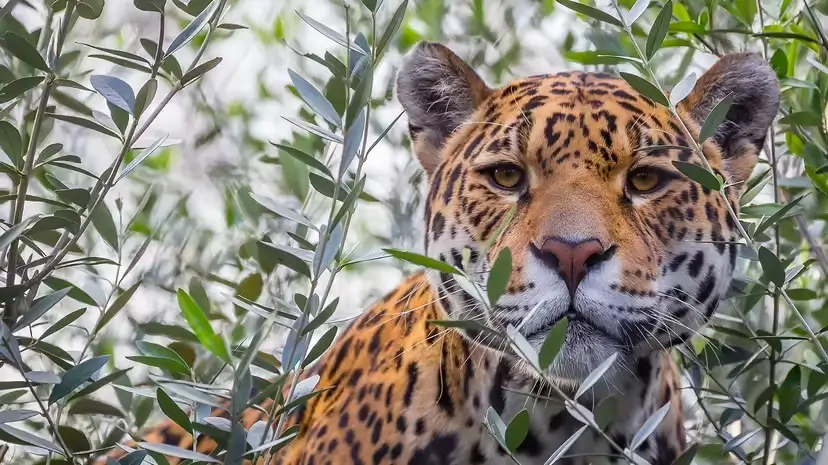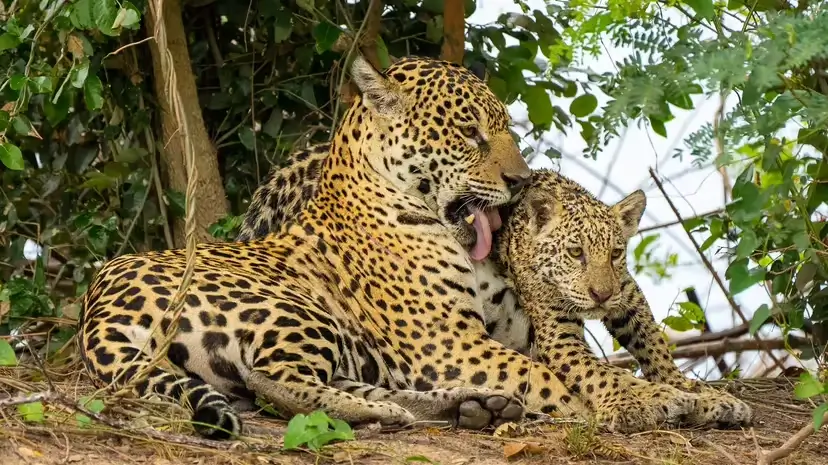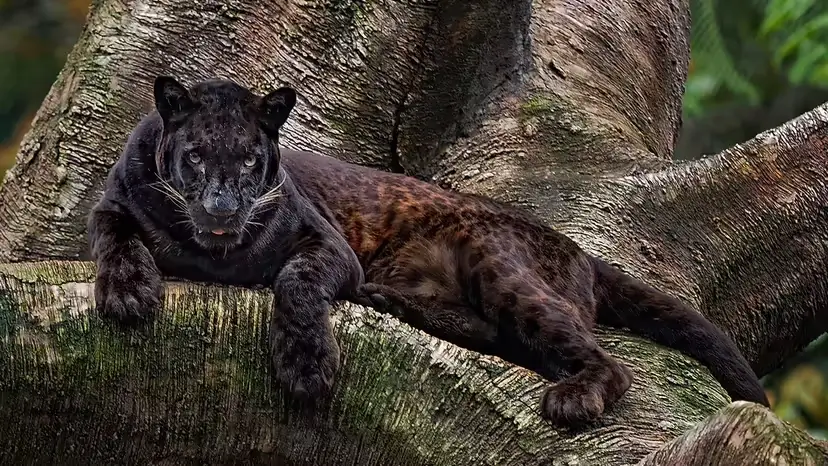Shortest answer: Panther isn’t a species. In most wildlife contexts, “black panther” refers to a melanistic leopard (Panthera pardus) in Africa/Asia or a melanistic jaguar (Panthera onca) in the Americas. Same species as their spotted counterparts—just a dark coat caused by genetics.

Panther = melanistic big cat (not a species)
Jaguar basics (range, size, behavior)
Leopard vs. Jaguar (how to tell them apart)
Melanism 101 (why some cats are “black”)
Range & habitat differences
Hunting styles & bite force
Quick ID checklist (field use)
Jaguar vs. Leopard quick-compare table
Myths to retire
FAQs
Why the distinction matters (conservation)
“Panther” is a catch-all nickname, not a scientific name. In practice:
Americas: “Black panther” → usually a black jaguar.
Africa/Asia: “Black panther” → usually a black leopard.
Even black individuals still show their species’ signature rosette pattern under certain light; the pattern is just masked by extra dark pigment.
Species: Panthera onca
Range (today): From Mexico through Central America into northern Argentina. Historically reached the U.S. Southwest (occasional males still disperse into southern Arizona).
Size: The largest cat in the Americas; robust, muscular frame; adults often 100–250 lb (45–113 kg), very stocky.
Habitat: Dense tropical forest is classic, but jaguars also use wetlands, dry forests, and savannas; excellent swimmers.
Lifestyle: Mostly solitary and territorial; females raise 1–2 cubs.
Diet & hunting: From turtles and armadillos to deer, peccaries, capybaras, even caimans. Jaguars are famous for skull- or shell-crushing bites and a direct piercing kill (often to the head).

Both are spotted members of the genus Panthera, and both can be melanistic (“black panthers”). Key differences:
Jaguar rosettes: Large, often with a central dot inside each rosette; coat looks bolder.
Leopard rosettes: Smaller, tighter, typically no central dot.
Build: Jaguars are stockier with broader heads and heavier chests; leopards are sleeker, more lithe, with longer tails (great for tree balance).
Jaguars: Power hunters, comfortable in water; often ambush and overpower large prey with crushing bites.
Leopards: Stealthy generalists; master climbers that stash kills in trees, often avoiding lions/hyenas by going vertical.
Melanism = increased dark pigment (eumelanin). It’s a genetic variant:
In leopards, melanism is typically a recessive trait.
In jaguars, melanism is often a dominant allele.
Benefits may include better camouflage in dense forests or enhanced nocturnal concealment. Even “black” cats still carry the species’ rosette blueprint, faintly visible in good light.

Jaguars: New World only (Americas). Best known from Amazonia and Pantanal wetlands, but broadly adaptable.
Leopards: Africa, Middle East, South & Southeast Asia, into China—one of the widest ranges of any big cat, from rainforest to semi-desert and mountains.
Jaguars: Among cats, they have one of the strongest bite forces relative to body size—enough to pierce turtle shells and caiman skulls.
Leopards: Versatile ambush predators; excel at dragging prey up trees to avoid scavengers.
If you can’t see color well (melanistic individual):
Silhouette/build: Thick, blocky head and stout body → likely jaguar (Americas). Sleeker frame, longer tail → likely leopard (Africa/Asia).
Context: Location is king. Americas = jaguar; Africa/Asia = leopard.
Pattern (if visible): Central dots inside rosettes → jaguar; no central dots and smaller rosettes → leopard.
Behavior: Cat swimming/hunting in water → jaguar more likely; hauling prey into trees → leopard classic.
| Feature | Jaguar (Panthera onca) | Leopard (Panthera pardus) |
|---|---|---|
| Core range | Americas (MX→ARG) | Africa, Middle East, Asia |
| Build | Stocky, muscular, broad head | Sleek, agile, long tail |
| Rosettes | Large, often with central dots | Smaller, no central dots |
| Habitat sweet spot | Tropical forests, wetlands | From rainforest to savanna & mountains |
| Signature behavior | Swimming, power takedowns | Climbing, caching kills in trees |
| Melanism label | “Black panther” (Americas) | “Black panther” (Afro-Eurasia) |
“Panthers are a separate species.”
Nope—usually black jaguars or black leopards.
“Black panthers don’t have spots.”
They do—rosettes are subtle under the dark coat.
“All big black cats are the same.”
Location and build matter: Americas → jaguar, Afro-Eurasia → leopard.
Are panthers always black?
“Panther” is colloquial; people use it mainly for melanistic individuals, but the underlying species can be spotted or black.
Which is bigger, jaguar or leopard?
Jaguars tend to be heavier and stockier; leopards are generally lighter and longer-tailed.
Do black jaguars and black leopards behave differently from spotted ones?
Behavior is species-typical (jaguar vs. leopard) regardless of coat color.
Can jaguars and leopards live together in the wild?
Their natural ranges don’t overlap in the wild (Americas vs. Afro-Eurasia).
Correct ID helps target protection where it’s needed:
Jaguars face threats from deforestation, poaching, and habitat fragmentation across the Americas.
Leopards contend with habitat loss, conflict with people, and prey depletion across a vast, patchy range.
Using “panther” loosely can muddle reporting, research, and policy. Naming the actual species—jaguar or leopard—supports the right conservation actions in the right places.
A “panther” is a black jaguar or a black leopard—same species, darker coat. Learn the rosettes, build, behavior, and range, and you’ll never mix them up again.
animal tags: Panther vs Jaguar
We created this article in conjunction with AI technology, then made sure it was fact-checked and edited by a Animals Top editor.